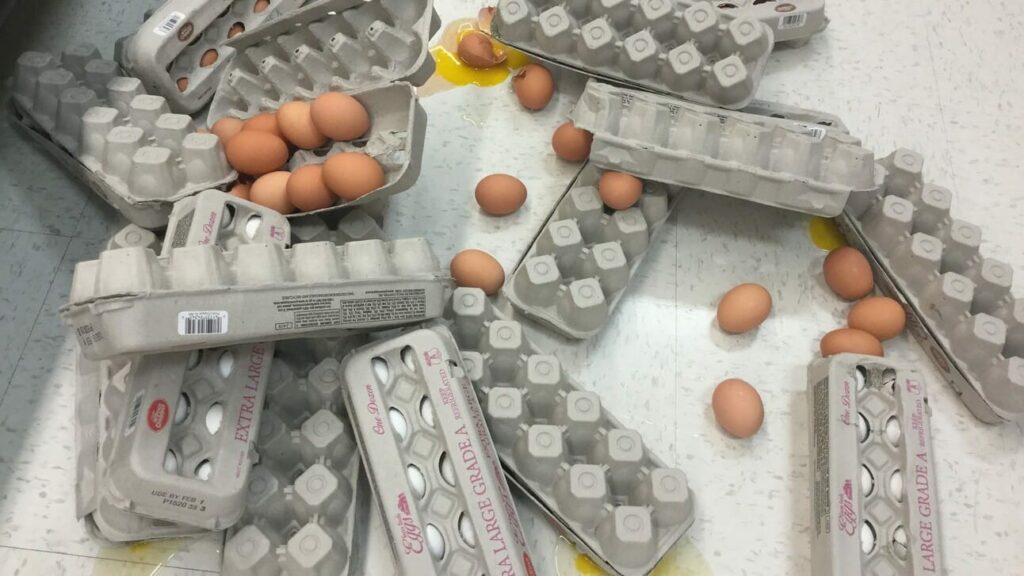A late-arriving Curve today, due to washer/dryer installation. It’s a glamorous life I lead.
A quick reminder that if you want to search Cost Curve back issues or link to anything you read here, the archive is online at costcurve.beehiiv.com.
Every three months, I feel like I have a certain duty to shout, as loud as I possibly can, that UNITEDHEALTH GROUP HAD A RECORD QUARTER AGAIN.
If you’ve read anything I’ve written, you know that I’m not anti-capitalist, so I’m not objecting to the company’s ability to make money. I’m just concerned that health insurance in this country appears to be getting worse at the same time that insurance company profits are rising, and it’s hard not to wonder if those two things are connected.
This quarter, that disparity is especially stark. United, as we all know, pretty much broke the entire health care system when its Change Healthcare unit got hacked. And despite the fact that United has spent/lost hundreds of millions of dollars dealing with that problem, profits rose more than expected and the company affirmed that it expects to meet its 2024 forecasts.
Shares rose, natch.
There’s no snarky conclusion here, no sweeping call to action. Just a reminder that United is sufficiently large and sufficiently profitable that it can break a $4.5 trillion health care system and walk away essentially unscathed.
Act accordingly.
This GAO assessment of PBM policy in the states is a worthwhile read because it makes one essential point with incredible clarity: regulators can move with a lot more speed and precision than lawmakers. Legislation tends to be a slow, blunt tool, and when you’re dealing with an industry adapting as quickly as PBMs, you’ll be forever behind the play.
That’s a lesson worth thinking about as you read today’s STAT coverage of Chuck Schumer’s inability to get insulin legislation passed. STAT frames Schumer’s struggles as a “broken promise,” but that’s being awfully hard on Chuck.
Midway through the STAT story, there are a couple of solid “to be sure” paragraphs that note that the environment has shifted considerably since Schumer took up the mantle. You have cost caps for Medicare under the IRA and a bunch of state laws. The story mentions increasingly watertight patient assistance from manufacturers.
And that’s without a mention of falling list prices (due to the AMP cap removal), plummeting net prices (due to rebating), more generics, etc.
The insulin market isn’t perfect, but it’s miles better than it was five years ago, and — if we’re being honest — it’s probably not the place where policymakers can have much practical impact. Things are simply moving too fast. And they’re moving in the right direction. Why bother wasting political capital when other forces are solving the issue?
In short, this is a place where the GAO conclusion about the limits of legislative action is probably illuminating.
I mean, if I were a U.S. Senator interested in driving down pharmaceutical costs, I’d look at the Humira biosimilars market, which is suddenly a lot more interesting that it was a month ago.
CVS Caremark’s move to boot Humira out of a preferred formulary position in favor of Hyrimoz — made by Sandoz but marketed by … CVS itself — seems to have been a wild success, judging from this STAT story based on an Evercore analyst report that found that Hyrimoz, seemingly overnight, boosted the biosimilars share of the Humira market from single digits to 36%.
That’s generally good news, especially for patients dealing with coinsurance. But it raises all kinds of other questions. STAT’s reporting suggests that rather than driving down costs to the health care system, the CVS move instead just shifts the flow of money from Humira’s maker, AbbVie, to CVS via a combination of vertical integration (since they “own” the biosimilar) and still-mysterious “rebate credits” that apparently allow CVS to hang onto money they would otherwise give back to health plans.
“Taken together, CVS is now ringing up higher revenue,” STAT concludes. The corollary there is that those “higher revenues” are dollars that are not, presumably, going to health plans and employers.
Maybe that’s an improvement over the status quo, but I’m not sure. I have lots of questions. Questions about rebate credits. Questions about health insurance companies owning their own drugmakers.
And getting those questions answered feels like a much better use of a lawmaker’s time than posturing on insulin.
The latest is IRA lawsuit news: PhRMA and its partners have filed the first brief in their appeal, which was picked up by Bloomberg Law.
I know that pharmaceutical companies have their beef with PBMs, but, at the end of the day, it feels like it’s the pharmacists that have the highest moral ground when it comes to conflicts with the PBMs. So it’s newsworthy that the pharmacists are out there writing letters to PBMs noting “egregious pharmacy contracting practices” … and newsworthy that those kinds of letters are making news.
I feel like there has been a ton of commentary on the really dumb JAMA Network Open piece on manufacturing costs for diabetes drugs, all making the related point that we don’t price medicine based on their COGS. Americans for Tax Reform is now also making that argument. I don’t know what it means that that particular organization has weighed in, but it feels important.
If this email was forwarded to you, and you’d like to become a reader, click here to see back issues of Cost Curve and subscribe to the newsletter.





